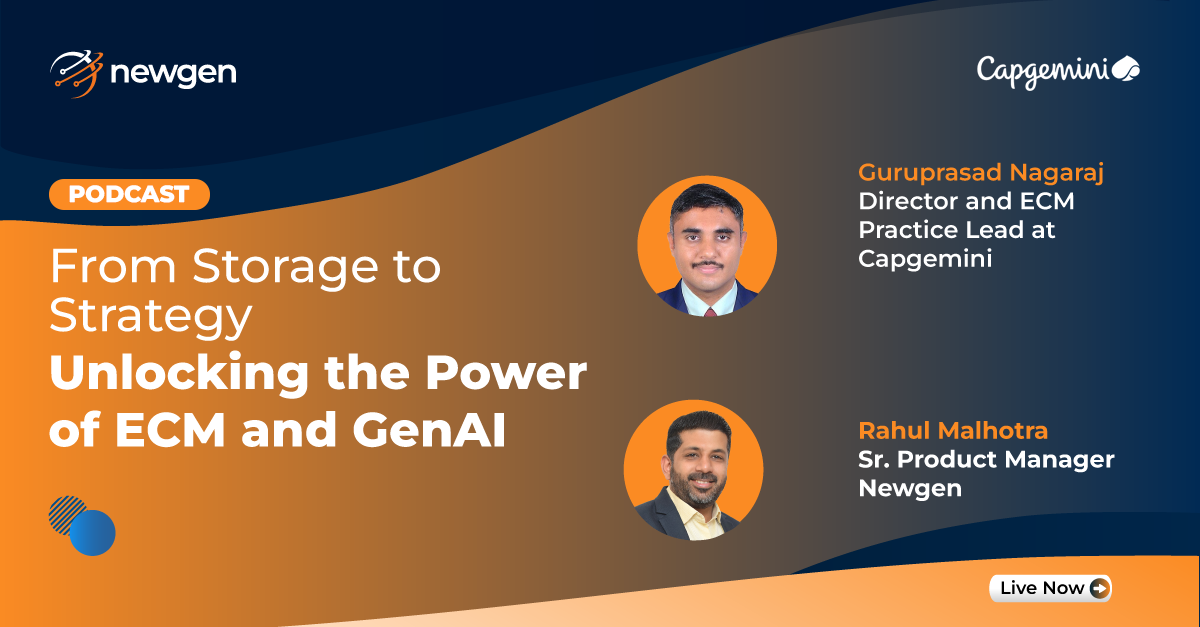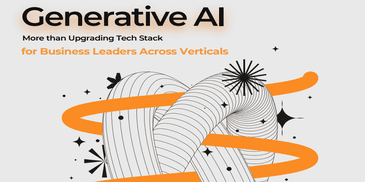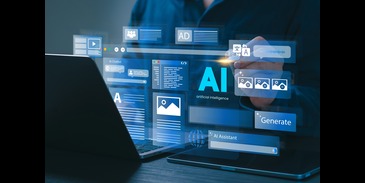App development isn’t what it used to be a few years ago. We’ve moved from a rigid step-by-step process to agile delivery. But even agile has its limits when your backlog grows faster than your delivery capacity.
That’s where generative artificial intelligence (GenAI) steps in—not just as a tool to expedite the processes, but as a partner that thinks, evolves, and scales with you.
So, how exactly is GenAI changing the application development game? And how can enterprises adopt it?
Let’s dive in.
What is Generative AI?
GenAI is a type of AI that creates highly realistic content, images, and code based on trained data. But in the world of app development, it’s much more specific.
Think of GenAI as the co-pilot that:
- Refactors legacy code into modern syntax
- Suggests context-aware snippets based on custom logic
- Builds UI layouts from prompts aligned with design libraries
- Generates test cases grounded in past defect history
GenAI recognizes all the patterns on scale, with a strong dependency on enterprise-specific context and quality datasets. It amplifies the capabilities of the app development team and offloads the repetitive tasks so they can drive their focus on architecture, logic, and innovation.
How Generative AI is Used in App Development
Let’s talk about real use cases. These are areas where teams are already experiencing results:
1. Front-end Prototyping
GenAI is helping teams transform wireframes or prompts into clean UI code. For organizations like yours, with well-defined design systems, this is a massive time-saver.
2. Code Recommendations
Enterprises are training internal large language models (LLMs) on their own codebases. This means code suggestions that respect your architecture, naming standards, and business logic.
3. Test Case Generation
GenAI isn’t just auto-filling dummy test cases – it’s learning from past logs and creating context-aware QA scripts that surface edge cases earlier in the cycle.
4. Microservice Composition
Instead of stitching together services manually, generative AI can generate boilerplate interactions based on internal API documentation and past patterns, reducing development time drastically.
Benefits of Using Generative AI in App Development
You’ve probably been pitched a dozen AI tools by now. But what makes GenAI worth considering in the app development lifecycle?
Here’s the real value:
- Accelerated Development Cycle: Reduces coding and time required for testing significantly, leading to prototypes up and running in days, not weeks
- Improved Developer Productivity: Uses AI to refactor legacy code without burning development bandwidth in repetitive coding, enhancing creativity
- Reduced Onboarding Time: New developers ramp up faster when AI assistants surface relevant internal patterns, delivering dynamic content, interfaces, or recommendations in real time
- Optimized Cost: Minimizes resource utilization while maximizing the output quality
In short: Fewer bottlenecks, intelligent workflows, and more room for creativity.
Real-world Use Cases of Generative AI in App Development
Forward-thinking organizations are already leveraging GenAI to reimagine their app delivery models:
- Financial institutions are using AI to generate code for compliance workflows
- Healthcare companies are auto-generating educational content and chatbot interfaces for patients
- Productivity tools are integrating GenAI to enhance user creativity and reduce manual effort
What do they have in common? GenAI has become a part of the workflow management.
Best Practices for Integrating Generative AI in App Development
While the value is clear, successful integration of Generative AI into app development requires a measured approach. Here are two strategic focus areas:
1. Choose the Right Tools and Platforms
Evaluate AI tooling based on:
- Integration with your existing AI-powered low-code DevOps ecosystem
- Support for preferred languages and frameworks
- Data security and compliance alignment
- Scalability and model transparency
Whether you choose pre-trained models (like OpenAI, Google’s PaLM) or integrate LLMs via cloud AI platforms, alignment with your architecture and team is the key.
2. Ensure Quality Control and Human Oversight
AI-generated output, whether code or content, must be validated through human review. Establish governance frameworks that include:
- Code validation pipelines
- Ethical AI usage guidelines
- Continuous monitoring of AI behavior
AI can supercharge your teams, but it works best when guided by human intent and domain expertise.
The Future of App Development with Generative AI
We are entering a new era where application development is co-created by humans and machines. Soon, we can expect:
- Prompt-driven app creation where business users describe features in natural language
- Self-optimizing apps that refine themselves based on real-time usage data
- Adaptive testing frameworks that evolve with application updates
- Faster prototyping for enterprise innovation labs and citizen developers
The future of application development is heading towards adaptive development—where code and logic evolve in real-time based on real-world triggers. And this future is only possible when you build platforms that are AI-ready by design.
Newgen: Enabling AI-first App Development
As enterprises embrace AI-driven transformation, Newgen stands at the forefront of this evolution. Our AI-first low-code platform is designed to seamlessly integrate with emerging AI technologies, including GenAI.
From content services platform to intelligent process automation and GenAI-assisted rapid application development, Newgen empowers businesses to:
- Enable faster time-to-market
- Deliver superior customer experience
- Build scalable, future-ready apps—faster
Our AI-first low-code app development platform is built for the future, offering:
- Built-in integration with GenAI and LLMs
- Smart component generation through prompts
- GenAI-driven automation across workflows and decisioning
We help enterprises scale faster without losing control, making app delivery not only quicker, but smarter. Whether you’re in banking/financial services, insurance, or government, Newgen ensures your app is aligned with business outcomes, while AI does the heavy lifting in the background.
Final Thoughts
GenAI is here to stay, and it will be powerful when paired with context, oversight, and intention. For businesses, this means rethinking development strategies, reskilling teams, and adopting technologies that unlock innovation.
Read this article to learn more about generative AI, applications and its impacts.
You might be interested in




